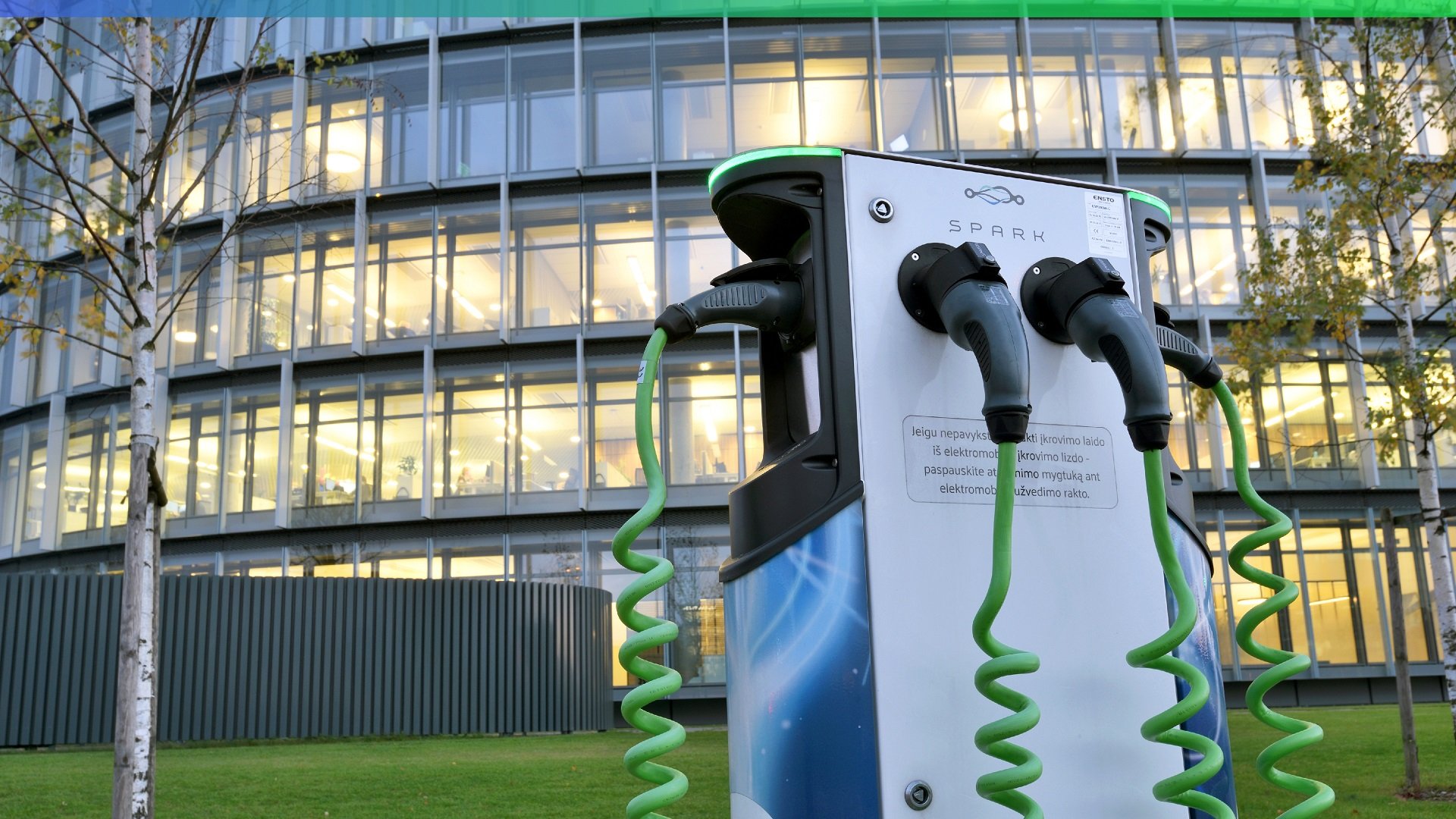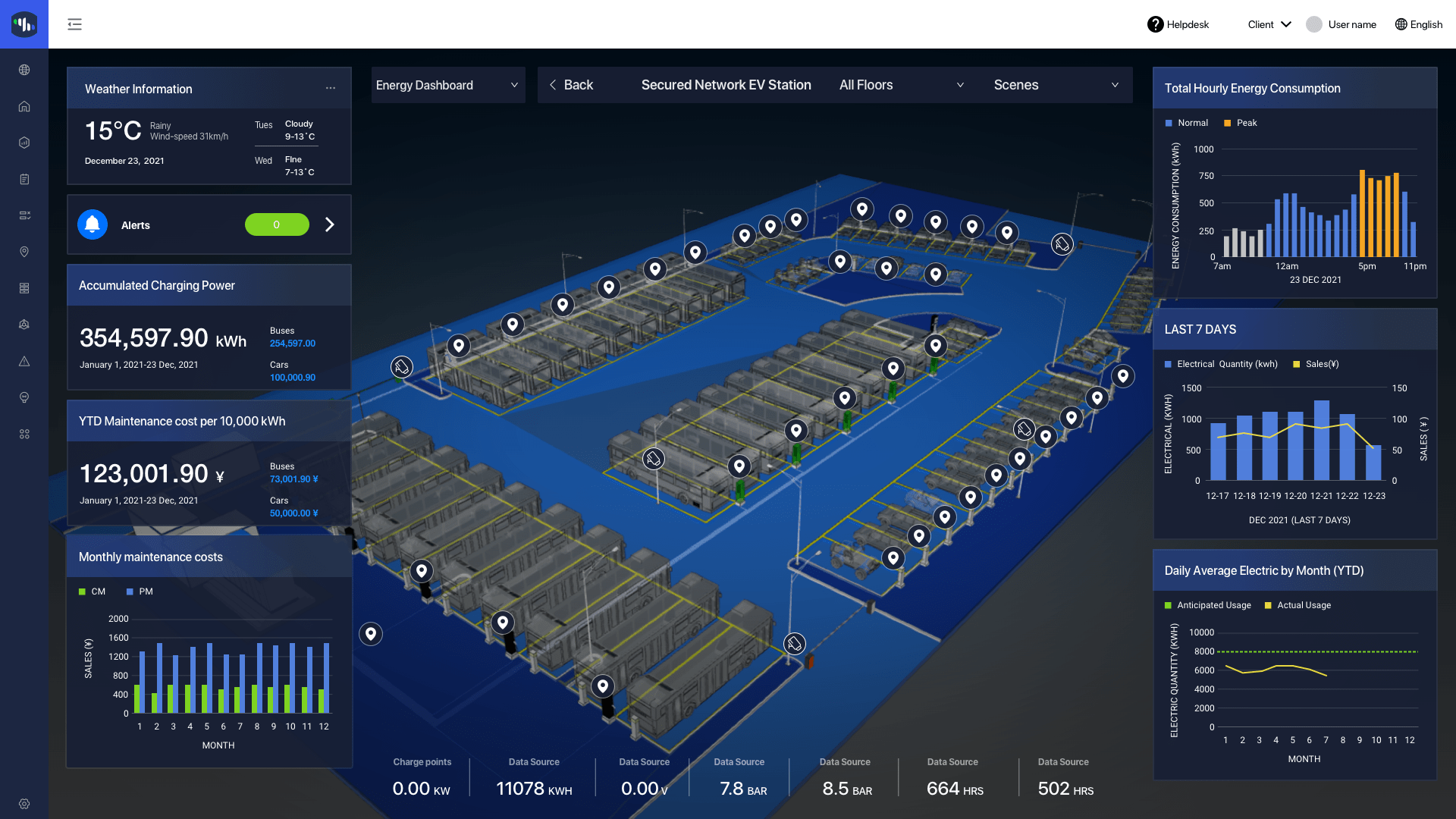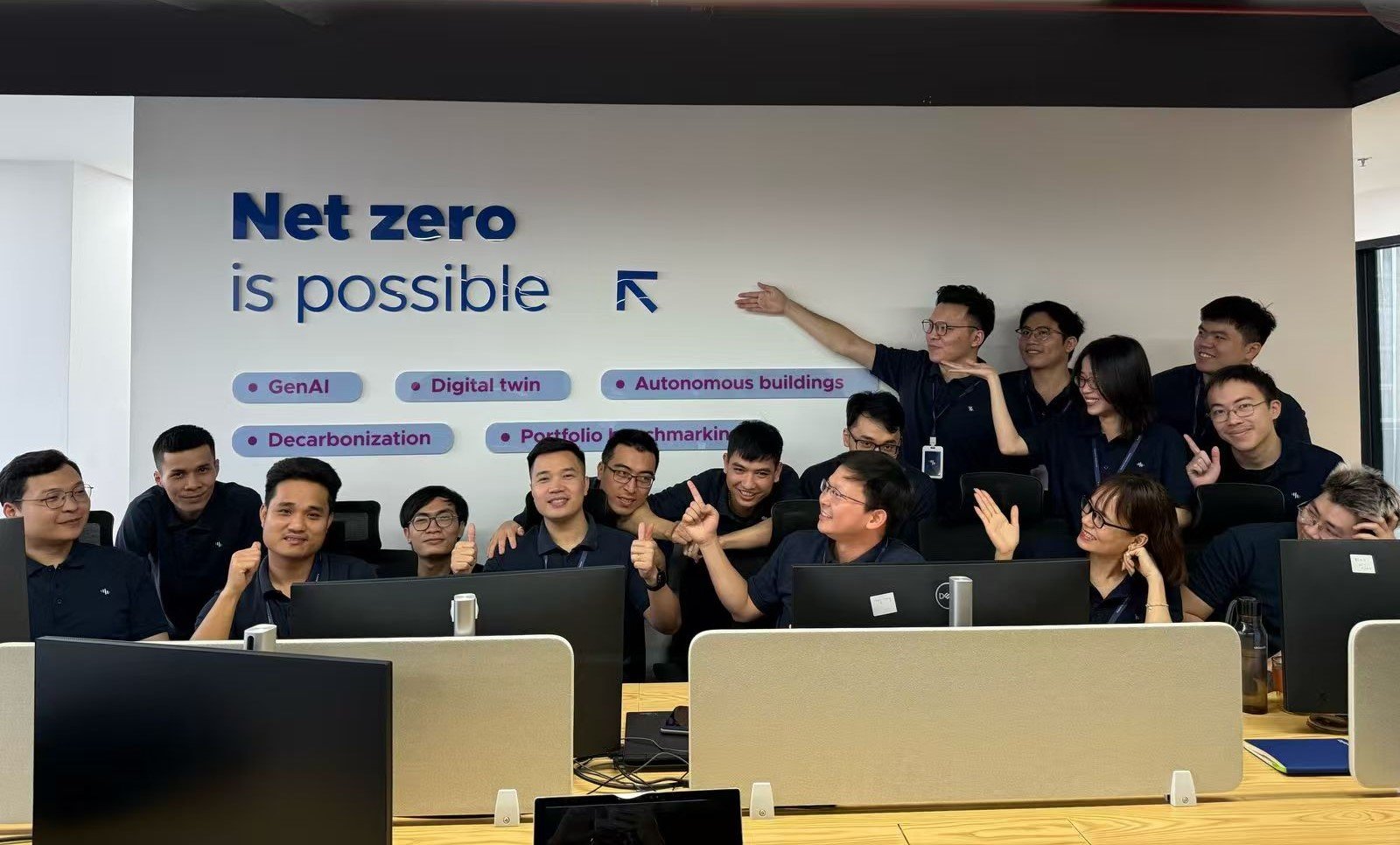
As electric vehicles (EVs) continue to gain popularity, the impact on buildings’ energy use becomes a pressing issue. EVs can increase the demand for a building’s electrical system, leading to higher costs and the need for infrastructure upgrades, and can potentially overwhelm local transformers’ capacity.
Additionally, the widespread adoption of EVs can lead to increased electricity and greenhouse gas emissions. However, digital twin technology offers a solution to these problems by providing real-time data and optimization capabilities.
The impact of EV charging on grids and buildings
Depending on how many EV charging stations are installed and how many EV cars are using them, the grid and buildings can be hit by increased energy and electrical strain.
The grid
Switching to EVs has many benefits, such as more efficiency from a fuel source (electricity vs petroleum or diesel). However, as more EVs are charged in the same location, the demand on the local grid increases, which can exceed local transformers’ capacity. This can cause localized outages and increase costs for utilities. A study by the National Renewable Energy Laboratory found that unmanaged EV charging can cause peak load growth of up to 50% and that the cost of upgrading transformers and wiring can be substantial.
Charging EVs from the grid also might influence greenhouse gas emissions, particularly if the grid’s electricity is generated from coal. For example, an EV charging in China or Indonesia with a grid that is 60% coal, will have up to 80% more emissions than charging the same EV on a grid in Norway (98% renewable) or New Zealand (82% renewable).
Building electrical systems
The increased load on electrical systems is also a potentially serious side effect. Installing EV charging stations increases the demand for energy from the building. In some cases, the only way to handle that increased load without tripping breakers is through infrastructure upgrades. The US Department of Energy recommends that building owners assess their electrical systems’ capacity before installing charging stations to avoid overloading the system and ensure safe and efficient charging.
Even if a building can handle the increased electrical load, installing chargers in itself can be a challenge. The cost of installing mass amounts of EV charging stations can be a significant barrier to adoption, especially for smaller businesses. Furthermore, there can be a range of obstacles to installation on existing commercial buildings, such as:
- Space limitations: Commercial buildings may have limited space for installing EV charging stations, especially in urban areas where space is at a premium. Building owners may need to prioritize other infrastructure needs, such as parking or loading docks, over EV charging stations.
- Hardware limitations: Installing EV charging stations may require upgrades to the building’s electrical infrastructure, including transformers, distribution panels, and wiring. These upgrades can be costly and may require building owners to hire specialized contractors.
- Regulatory and permitting challenges: Building owners may need to navigate a complex web of regulations and permitting requirements to install EV charging stations, including zoning laws, building codes, and electrical permits. The process can be time-consuming and expensive.
- Liability concerns: Building owners may have concerns about liability related to EV charging stations, including potential damage to vehicles or property, electrical safety issues, and data privacy concerns. Building owners may need to address these concerns through insurance, indemnification clauses, and other legal agreements.
- Maintenance and repairs: Installing EV charging stations is only the first step. Building owners also need to consider the ongoing costs of maintaining and operating the charging stations, including electricity costs, maintenance costs, and user support costs.

Digital twin EV charging in Akila
Using digital twins to manage EV charging
Digital twin technology offers a solution to these problems by providing real-time data and optimization capabilities. In the case of EV charging, digital twins can help manage the impact of EV charging on the electrical grid and building electrical systems through load optimization and simulation.
Real-time data on charging patterns and demand can help manage the impact of EV charging on the electrical grid. Digital twins centralize the management of the entire power load of a building in a central platform—including EV charging points. This provides a full insight into the current power demand and can control or modulate the charging in a way to avoid peak load stress and prices. For example, if the building power use is going close to a peak, all charging is stopped or limited to cars that have indicated a priority and acceptance to pay for increased prices.
Using simulations of different scenarios can optimize the charging schedules so building owners and managers can reduce their energy consumption and save on energy costs.
Digital twins can simulate and optimize the amount and location of charging stations to minimize the impact on the grid and existing electrical systems. By simulating different scenarios and optimizing the placement of charging stations, digital twins help building owners and managers avoid the need for infrastructure upgrades and ensure safe and efficient charging.
The visualization and deep data provided by digital twins give property owners and building managers the to monitor the charging stations’ performance and the load on their electrical systems. By providing real-time data on charging patterns and demand, digital twins give more insight to decision-makers and operations teams alike, reducing the chance of system failure and making the maintenance process more efficient.
With a growing amount of EV drivers, the impact on buildings’ energy use and infrastructure will become increasingly important to manage. Digital twins offer a solution that can help building owners and managers protect their electrical systems and offers some protection to the grid as well.
Building owners and managers should explore the use of digital twins in managing the impact of EVs on their energy systems and infrastructure to help reduce the overall carbon footprint of their buildings. With the right tools and strategies, we can mitigate the impact of electric vehicles on our energy systems while promoting sustainable transportation for a greener future.




